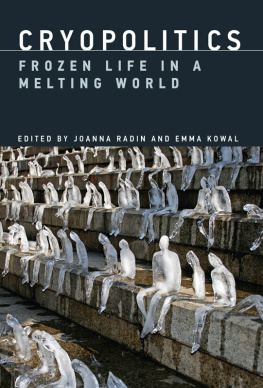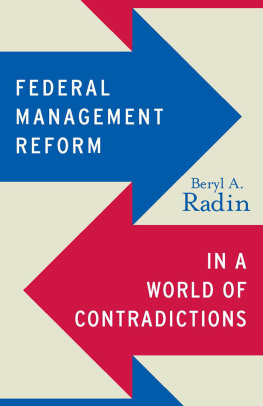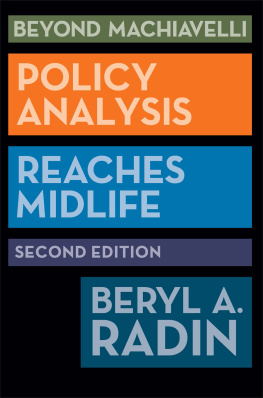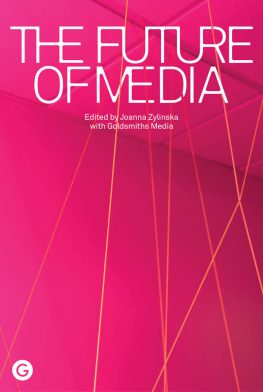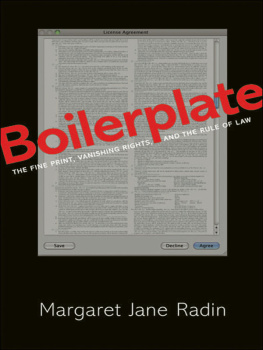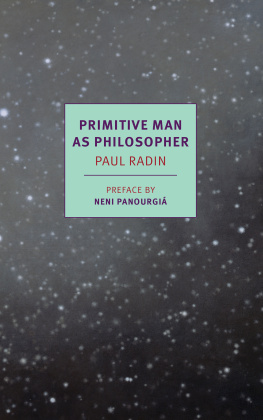Radin Joanna - Cryopolitics - frozen life in a melting world
Here you can read online Radin Joanna - Cryopolitics - frozen life in a melting world full text of the book (entire story) in english for free. Download pdf and epub, get meaning, cover and reviews about this ebook. year: 2017, publisher: Mit Press Ltd, genre: Politics. Description of the work, (preface) as well as reviews are available. Best literature library LitArk.com created for fans of good reading and offers a wide selection of genres:
Romance novel
Science fiction
Adventure
Detective
Science
History
Home and family
Prose
Art
Politics
Computer
Non-fiction
Religion
Business
Children
Humor
Choose a favorite category and find really read worthwhile books. Enjoy immersion in the world of imagination, feel the emotions of the characters or learn something new for yourself, make an fascinating discovery.
- Book:Cryopolitics - frozen life in a melting world
- Author:
- Publisher:Mit Press Ltd
- Genre:
- Year:2017
- Rating:4 / 5
- Favourites:Add to favourites
- Your mark:
- 80
- 1
- 2
- 3
- 4
- 5
Cryopolitics - frozen life in a melting world: summary, description and annotation
We offer to read an annotation, description, summary or preface (depends on what the author of the book "Cryopolitics - frozen life in a melting world" wrote himself). If you haven't found the necessary information about the book — write in the comments, we will try to find it.
Cryopolitics - frozen life in a melting world — read online for free the complete book (whole text) full work
Below is the text of the book, divided by pages. System saving the place of the last page read, allows you to conveniently read the book "Cryopolitics - frozen life in a melting world" online for free, without having to search again every time where you left off. Put a bookmark, and you can go to the page where you finished reading at any time.
Font size:
Interval:
Bookmark:

edited by Joanna Radin and Emma Kowal
The MIT Press
Cambridge, Massachusetts
London, England
2017 Massachusetts Institute of Technology
All rights reserved. No part of this book may be reproduced in any form by any electronic or mechanical means (including photocopying, recording, or information storage and retrieval) without permission in writing from the publisher.
This book was set in Stone Sans and Stone Serif by Toppan Best-set Premedia Limited. Printed and bound in the United States of America.
Library of Congress Cataloging-in-Publication Data
Names: Radin, Joanna, editor. | Kowal, Emma, editor.
Title: Cryopolitics : frozen life in a melting world / edited by Joanna Radin and Emma Kowal.
Description: Cambridge, MA : The MIT Press, [2017] | Includes bibliographical references and index.
Identifiers: LCCN 2016031905 | ISBN 9780262035859 (hardcover : alk. paper)
eISBN 9780262338684
Subjects: | MESH: Cryopreservation | Attitude to Death | Politics
Classification: LCC QH324.9.C7 | NLM QY 95 | DDC 570.75/2--dc23 LC record available at https://lccn.loc.gov/2016031905
ePub Version 1.0
The authors would especially like to thank Warwick Anderson for intellectual and material support. He, Jenny Reardon, Kim TallBear, Tiffany Romain, and Jenny Brown were members of the 2012 session Defrost: The Social After-lives of Biological Substance at the American Anthropological Association and contributed to the earliest articulations of cryopolitics. Along with the contributors to this collection, Marcia Inhorn, Dominique Martin, Alan Petersen, Katharina Schramm, Tim Neale, Ros Bandt, Jennifer Fleming, and Ann-Maree Farrell participated in the Cryopolitics workshop in Melbourne in December 2013 and assisted with our collective thinking on the topic. Karen-Sue Taussig, Alyssa Battistoni, Molly Greene, and Noreen Khawaja provided invaluable insights that helped sharpen our ideas. We are also grateful to Ashley Greenwood, Ava Kofman, Ann Sarnak, and Janneke Koenen, each of whom provided crucial editorial and organizational acumen. Margy Avery first brought this project to the MIT Press, and our editor Katie Helke has done a marvelous job shepherding it to publication. Emma Kowals work was funded by an Australian Research Council Discovery Early Career Researcher Award (DE120100394) and Discovery Grant (DP150102087).
Joanna Radin and Emma Kowal
In the late 1950s, at the height of the Cold War, a team of scientists participating in the International Geophysical Year traveled to Arctic and Antarctic glaciers (Belanger 2007). This was the beginning of a long-term effort to study the deep history of climate change, buried in snow and concealed in deep layers of ice. This new practice, called ice coring, transformed the dense, frozen water of glaciers into archives of the atmosphere, providing evidence of recent and significant spikes in greenhouse gases (Alley 2000; Jouzel, Lorius, and Raynaud 2012). Decades, then centuries, and soon millennia were recovered in crystalline cylinders of glacier. Bubbles in these extracted ice cores held a frozen record of seasons past. They contained methane, carbon dioxide, and oxygen isotopes that could be used to track gradual changes in the air.
In the twenty-first century, seventeen kilometers worth of such ice cores are stored in freezers at the US National Ice Core Laboratory in Denver, Colorado, which boasts one of the largest subzero experimental facilities in the world (fig. 3a.7). Moreover, as rising temperatures thaw the permafrost, long-dormant and potentially pathogenic agents may be released into the atmosphere (Parkinson et al. 2014). Such pathogens and other forms of cryptic life may be lurking in the freezers of the National Ice Core Laboratory.
How can we make sense of the complex forms of risk and potential produced through these networks of low temperature? Who is responsible for regulating the lives affected by these systems? Are these networks even legible as entities with power over life and death? The archetypical conjunction of temperature, time, and survival involved in the project of extracting and maintaining Arctic ice using energy-intensive artificial freezersall in in the name of scientific salvationinvites a mode of critical reflection we call cryopolitical. This volume, Cryopolitics: Frozen Life in a Melting World, presents sixteen essays that give substance to a cryopolitical analytic, drawing on diverse contexts and disciplinary perspectives.
The prefix cryo, from the Greek, kro (), for frost, refers to phenomena that produce cold. In a literal sense, cryo signals the forms of stasis made possible through reductions in temperature. As the degrees drop, metabolic processes are slowed and, in some cases, even stopped. Early cryobiologists, the scientists who studied the limits of life at low temperature, called this latent life (Keilin 1959). Beginning in the 1930s, Basile Luyet, a Catholic priest and perhaps the first dedicated cryobiologist, sought to understand what life was by examining it from the perspective of what it was not (Luyet and Gehenio 1940). This meant bringing life forms to their limit, a point where all metabolic activity appeared to cease, only to warm them up again and return them to normal functioning. For Luyet and his followers, latent life represented a state of suspended animation in which it was not possible to declare something to be dead or alive. He devoted his career to experimenting with efforts to freeze and thaw different forms of living substance, and his work contributed to the emergence of new forms of artificial insemination, blood transfusion, and tissue banking. These practices of cryopreservation are emblematic of what Alexander Friedrich describes in chapter 3 as a cryogenic culture.
This cryogenic culture has its roots in the nineteenth century, when the pursuit of cold as a resource for industry, either through the harvesting of ice or its production through new steam-powered technologies, also produced knowledge about the natural world, with social consequences. Chapter 5 presents Rebecca Woodss account of the Victorian era cold chain that facilitated a global trade in meat between England and its colonies in the Southern hemisphere. This industrial engagement with low temperature was celebrated in the nineteenth century as allowing the seasons to shake hands.
In the twenty-first century, forms of preserved substance, both naturally occurring and machine-maintained, comprise our planets cryosphere, or what Nicola Twilley (2012) has called a coldscape. The coldscape is an infrastructure, a constellation of social and technical systems that stabilizes otherwise ephemeral and dynamic materials such that they can circulate, producing nutrition, comfort, health, and knowledge, albeit unevenly across the globe. Making and maintaining low temperature, however, comes at a cost.
Cold itself is a matter of degree, and different kinds of machines have been devised to produce and measure different registers of low temperature (Chang 2004). For example, a signal achievement of refrigeration engineering has been to produce cold-storage technologies capable of maintaining very specific low temperatures (Scurlock 1990). It is not uncommon to find laboratories with household refrigerators set to 4C, ice machines that produce cubes at freezing temperature, upright freezers at 20C, freezer chests at 80C (the approximate temperature of dry ice), and liquid nitrogen tanks filled with gas that boils at 196C. Each of these machines also requires maintenance to ensure its perpetuation as well as that of its contents. Frdric Keck, in his comparison in chapter 6 of the different temperatures at which samples of influenza are stored and influenza vaccines are stockpiled, argues that these distinct thermal regimes contribute to unscaling human temporality and rescaling it in accordance with shifting ideas of risk that circulate between animal reservoirs and human hosts. The production of these kinds of thermal regimes has also been accompanied by the spaces between them, what we might call the thermal margins: zones of precarity, ambiguity, and unexpected generativity that also reorganize ideas about what it means to be and to remain alive.
Next pageFont size:
Interval:
Bookmark:
Similar books «Cryopolitics - frozen life in a melting world»
Look at similar books to Cryopolitics - frozen life in a melting world. We have selected literature similar in name and meaning in the hope of providing readers with more options to find new, interesting, not yet read works.
Discussion, reviews of the book Cryopolitics - frozen life in a melting world and just readers' own opinions. Leave your comments, write what you think about the work, its meaning or the main characters. Specify what exactly you liked and what you didn't like, and why you think so.

